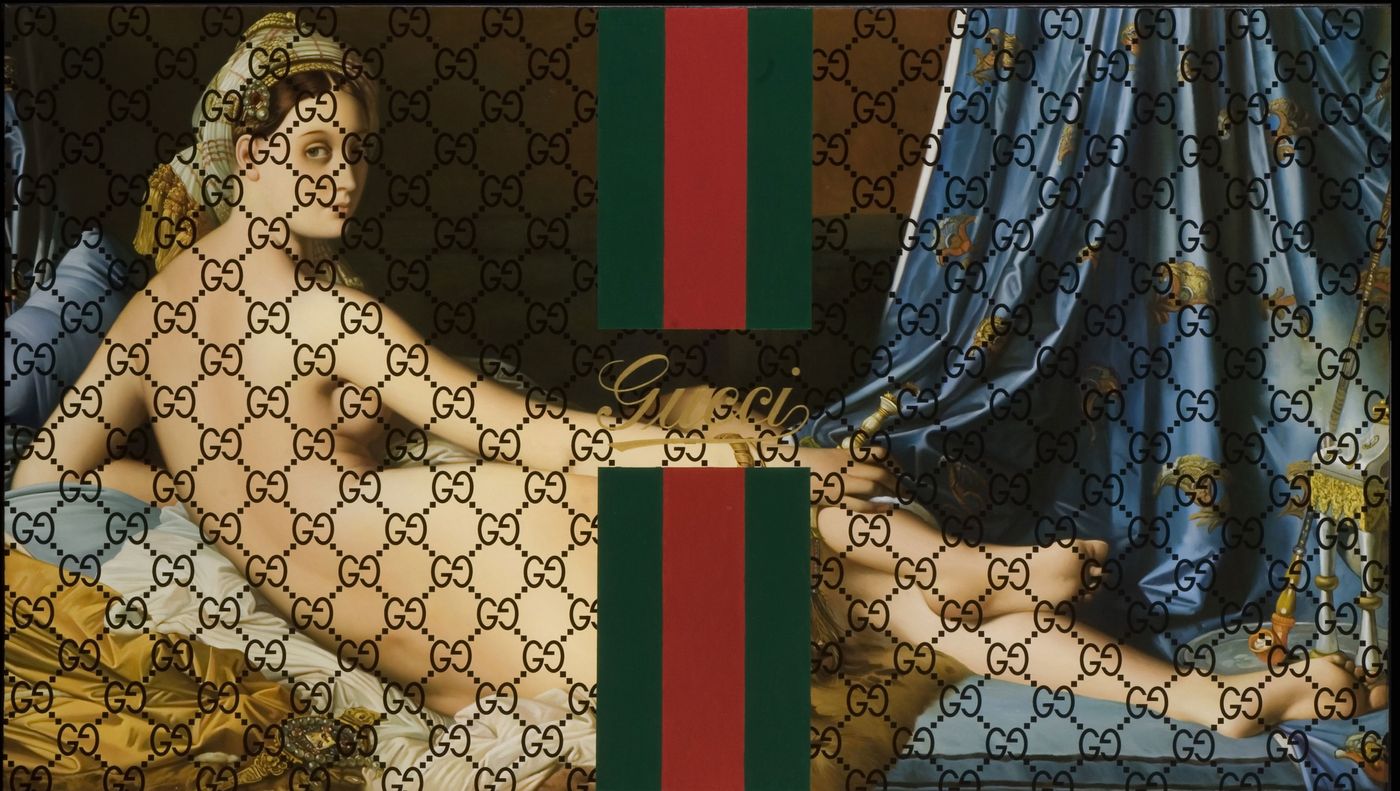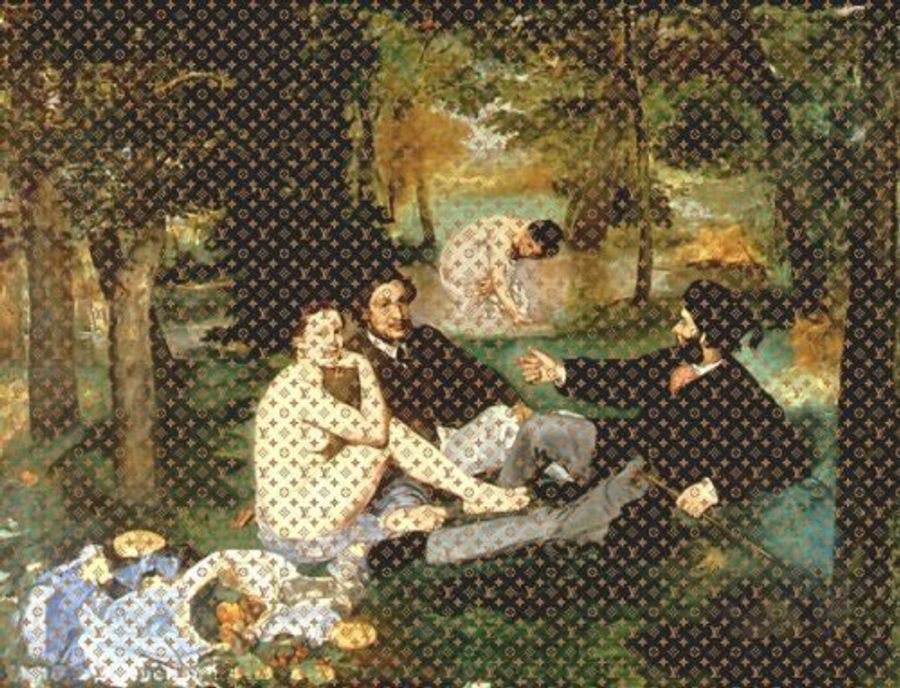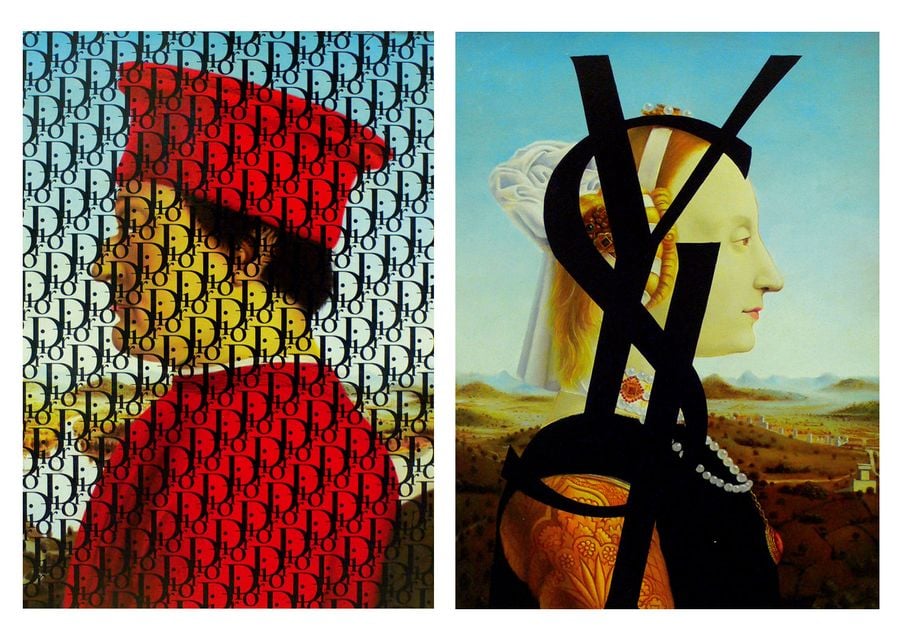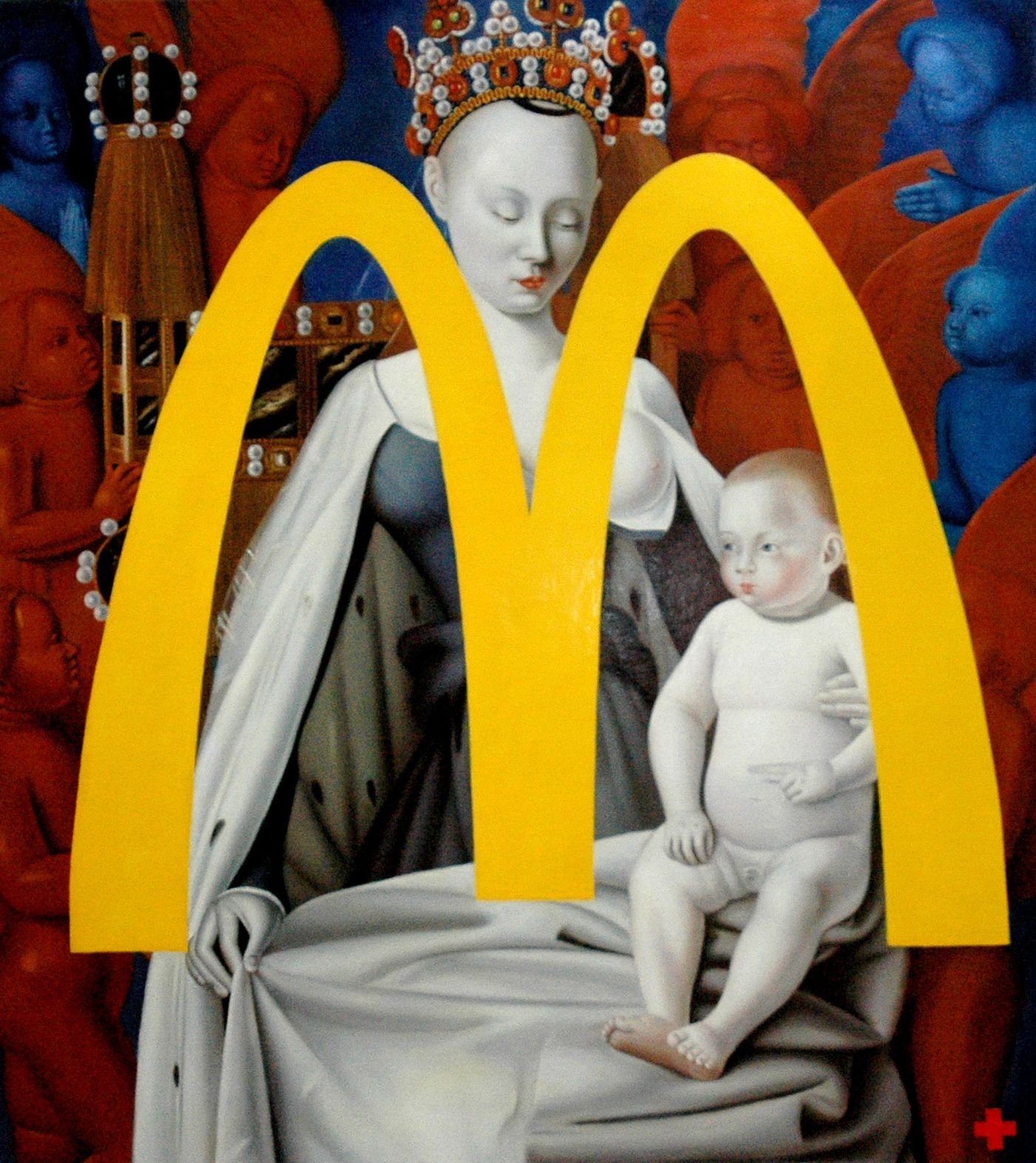
Jean Charles de Castelbajac’s Triumph of the Sign: A Collision of Art and Consumerism
Words by Costas Voyatzis
Location
London, UK
Jean Charles de Castelbajac’s Triumph of the Sign: A Collision of Art and Consumerism
Words by Costas Voyatzis
London, UK
London, UK
Location
From April 3rd to May 2nd, 2009, Paradise Row in London will host Triumph of the Sign, the first solo exhibition of acclaimed fashion designer Jean Charles de Castelbajac. Renowned for his revolutionary approach to fashion and art, Castelbajac has spent his career engaging in what he calls “cultural hijacking”—the appropriation, synthesis, and transformation of imagery and symbols from both high art and popular culture into something entirely new.
This exhibition underscores Castelbajac’s fascination with the intersections between high art and consumer culture. The centerpiece of Triumph of the Sign is a series of paintings that explore the omnipresent influence of brand logos in modern visual culture. These works serve as both critique and celebration, a reflection of the tension between artistic tradition and consumerist modernity.

Detourn sur l'herbe Mimétic Pic Nic 2008, Jean-Charles de Castelbajac
Oil on canvas
Image copyright Jean-Charles de Castelbajac, Courtesy Paradise Row.

Post Krieg, 2009 by Jean-Charles de Castelbajac
Oil on canvas
37.43 x 29.55 inches, 95 x 75 cms
Image copyright Jean-Charles de Castelbajac, Courtesy Paradise Row.
In an innovative process echoing the mass production of consumer goods, Castelbajac commissioned painters in China to faithfully replicate iconic Western masterpieces by artists like Bronzino and Manet. Once completed, a second group of artists painted brand logos directly onto the surfaces of these copied works. The result is a provocative collision of classical aesthetics and corporate iconography.
These altered masterpieces challenge conventional hierarchies in art, flattening distinctions between “high” and “low” culture. By merging timeless works of art with transient corporate logos, Castelbajac creates pieces that paradoxically embody both permanence and ephemerality, substance and superficiality.
In his works, Castelbajac critiques the commodification of culture and the relentless branding of contemporary life. His paintings become “perfect signs” of the current moment, reflecting a world where meaning is often overshadowed by the power of the logo. This theme aligns with Roland Barthes’ observation of “humiliated repetition” in mass culture and Karl Marx’s critique of capitalism’s perpetual transformation and destabilization of society.
“Constant revolutionizing of production, uninterrupted disturbance of all social conditions, everlasting uncertainty and agitation distinguish the bourgeois epoch from all earlier ones. All fixed, fast frozen relations, with their train of ancient and venerable prejudices and opinions, are swept away, all new-formed ones become antiquated before they can ossify. All that is solid melts into air, all that is holy is profaned, and man is at last compelled to face with sober senses his real condition of life and his relations with his kind.” - Karl Marx, The Communist Manifesto
The juxtaposition of timeless art and fleeting corporate imagery evokes Marx’s famous declaration: “All that is solid melts into air.” In Castelbajac’s hands, art history becomes a canvas for examining how modernity consumes, repurposes, and ultimately redefines tradition.
Castelbajac’s openness to contemporary visual culture has driven collaborations with some of the most iconic artists of our time, including Keith Haring, Jean-Michel Basquiat, Andy Warhol, Bettina Rheims, and Loulou Picasso. This same spirit of collaboration and experimentation is evident in Triumph of the Sign, where the act of creation is shared across continents and cultures.

Arminius Armagnus, 2009 by Jean-Charles de Castelbajac
Oil on canvas
16.94 x 12.61 inches, 43 x 32 cms
Image copyright Jean-Charles de Castelbajac, Courtesy Paradise Row.
“The bastard form of mass culture is humiliated repetition... always new books, new programs, new films, news items, but always the same meaning.” - Roland Barthes
Jean Charles de Castelbajac’s Triumph of the Sign is more than an exhibition; it’s a mirror held up to our consumer-driven world, reflecting its contradictions, creativity, and absurdities. By blending high art with the ubiquitous language of branding, Castelbajac invites us to question what we value, what we consume, and what it means to create in an era defined by logos.
Visitors to Paradise Row, located at 17 Hereford Street in London, will have the opportunity to engage with this thought-provoking body of work from April 3rd to May 2nd, 2009. This is not just a show—it’s a cultural statement that promises to leave a lasting impression.

Topkapital, 2008 by Jean-Charles de Castelbajac
Oil on canvas, serigraphy
35.85 x 63.83 inches, (91 x 162 cms)
Image copyright Jean-Charles de Castelbajac, Courtesy Paradise Row.

Yves Droite Yves Gauche, Diptych, 2008, Jean-Charles de Castelbajac
Oil on canvas
18.52 X 13 inches each one, (47 X 33 cms) each one
Image copyright Jean-Charles de Castelbajac, Courtesy Paradise Row.

Agnés Macternity 2008 by Jean-Charles de Castelbajac
Oil on canvas
31.91 x 35.85 inches (81 x 91 cms)
Image copyright Jean-Charles de Castelbajac, Courtesy Paradise Row.